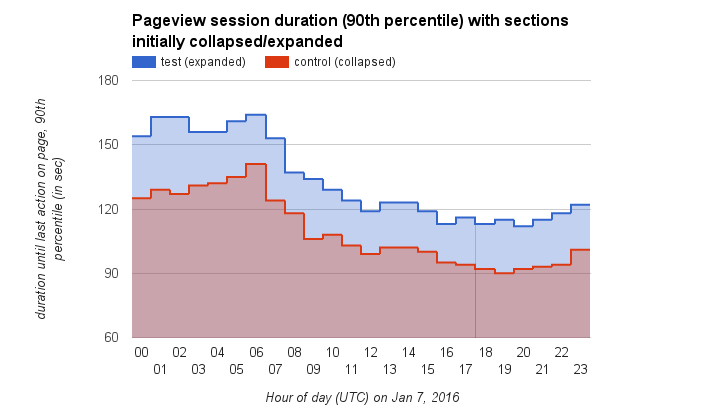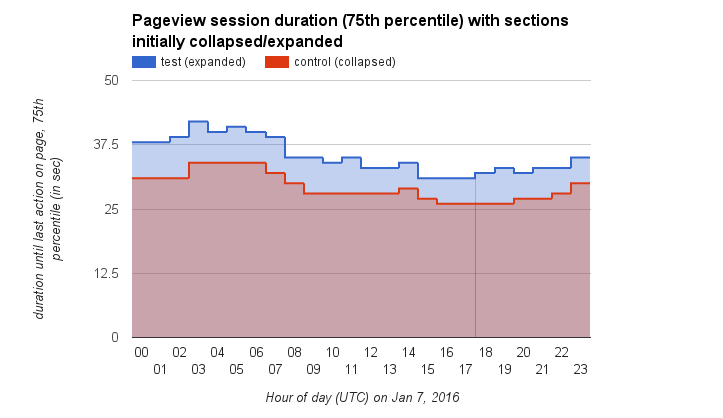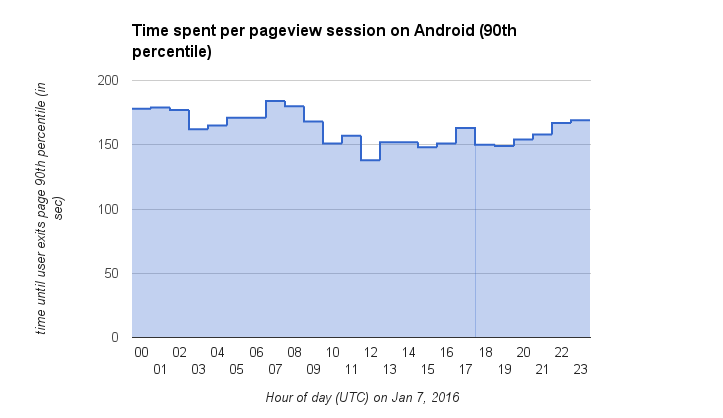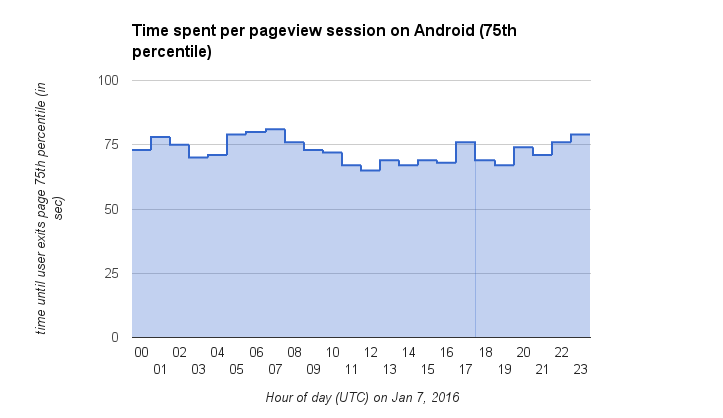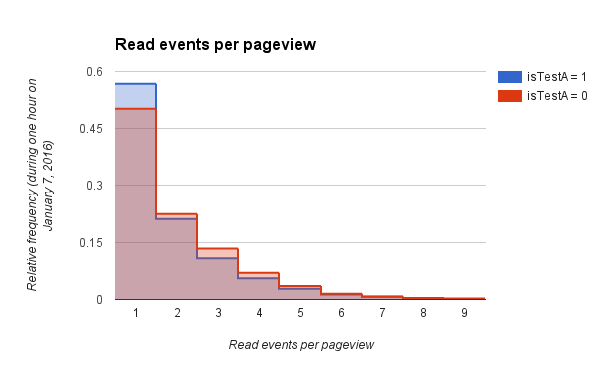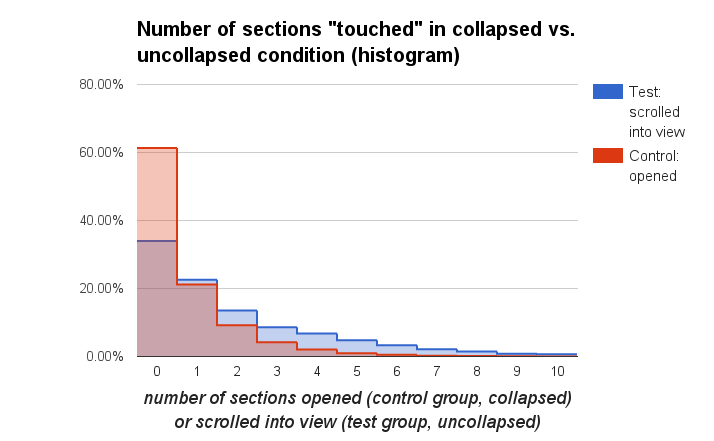Examine the data from the experiment set up in T120292 , where 0.05% of mobile web users were shown all pages with every section expanded on initial load, alongside a control group of 0.05% that kept seeing the standard view where all sections all initially collapsed. (For the most part this is not an A/B test in a strict sense, because we are not comparing the same metric for both groups.) This is a followup to T118041, which preceded that experiment.
The goal is to inform the discussion about the tradeoffs of collapsing sections by default on mobile.
- 1. Compare (in a suitable sense) how many sections are scrolled into view in the uncollapsed view with how many are opened in the collapsed view
- --> result
- 2. compare the time readers spent reading vs. navigating on a page in both conditions, interpreting scroll/open events that are not followed by another event within the next 5 seconds as the start of a period of focused reading
- --> result
- 3. Take into account what we know about usage of separate TOC on mobile where available (e.g. from Android instrumentations for TOC and scroll usage?)
- --> partial result (other parts affected by session sampling bug, see T128931#2293576)
-
Compare user session lengths (defined as the number of pages viewed)?(not possible due to session sampling bug, see T128931#2293576) - 5. Compare pageview session durations (defined as the time between "entered" and the last event logged on the same page)
- --> result
A more readable writeup of the most releveant results is being drafted at [[meta:Research:Collapsed vs uncollapsed section view on mobile web]]
